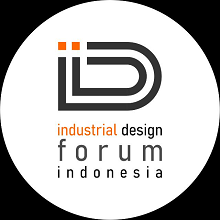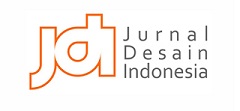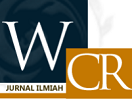REPRESENTASI BUDAYA NUSANTARA DALAM ANIMASI BINEKON
Abstract
The characters contained in the Binekon animation are "representatives" of the culture that exists in Indonesia. Similar to a film, animation also has elements of construction and social representation that want to be built by giving meaning in the reality that occurs in society. Researchers will focus on discussing how the portrayal of binekon animated characters is represented from the social reality of the ethnic / racial communities of the Archipelago with the Pierce semiotic method. The triadic sign model proposed by Pierce, is depicted simply with three points, namely the sign, object, and interpreter. The hallmarks of this study are the characters found in the animations, with the visuals present in each character, then the intepretant is the archipelago culture. And the results of the study showed every character contained in the Binekon animation by Belantara Studio is a cultural representation of the archipelago that represents the major islands in Indonesia, namely Sumi from Sumatra, Jabo from Java, Kale from Kalimantan Island, Sula from Sulawesi Island, and Papu from Papua Island.
Keywords
Full Text:
PDF (Bahasa Indonesia)References
Aqli, W. (2011). Anatomi Bubungan Tinggi SEbagai Rumah TRadisional Utama Dalam Kelompok Rumah Banjar. Jakarta: UMJ.
Carter, D. E. (2003). The Big Book of Color in Design. New York: HDI.
Djono., Utomo, T. P., & Subiyantoro, S. (2012). Nilai Kearifan Lokal Rumah Tradisional Jawa. Jurnal Humaniora, Vol.24 (3) Oktober 2012. Surakarta: Universitas Sebelas Maret.
Eco, U. (2011). Teori Semiotika: Signifikasi Komunikasi, Teori Kode, serta Teori Produksi Tanda. Yogyakarta: Kreasi Wacana.
Fiske, J. (2011). Cultural and Communication Studies: Sebuah Pengantar Paling Komprehensif. Yogyakarta: Jalasutra.
Giles, J., & Middleton, T. (1999). Studying Culture: A Practical Introduction. United Kingdom: Blackwell Publisher.
Habibi, G. (2018). Rumah Gadang yang Tahan Gempa. Jakarta: Badan Pengembangan dan Pembinaan Bahasa.
Juliastuti, N. (2000). Teori Sosiologi Modern. Jakarta: Kencana.
Leonaldy, I, Fretisari, I. (2014). Motif Dayak. Pontianak: Program Studi Pendidikan Seni dan Tari Musik Untan.
Madsen, R. (1996). Animation Film Concepts, Methods, and Uses. United Kingdom: Interland Pub.
Ranang, B, Asmoro. (2010). Animasi Kartun Dari Analog Sampai Digital. Jakarta: Indeks.
Rumansara, E, H. (2014). Seni Ukir Asmat. Yogyakarta: Kepel Press.
Shekelle, M. (2008). Distribution of Tarsier Acoustic Froms North and Central Sulawesi: With Notes on The Priary Taxonomy of Sulawesi’s Tarsiers. Jakarta: LIPI Press. 35-50.
Sultan, St. H., Mayasari, K. (2014). Teknologi dan Konstruksi Rumah Tradisional Toraja (Tongkonan). Balai Pengembangan Teknologi Perumahan Tradisional Makassar. Jurnal Masalah Bangunan Vol.49(1), 40-45.
Suprayitno., & Ariesta, I. (2014). Makna Simbolik Dibalik Lurik Solo-Yogyakarta. Jurnal Humaniora, Vol. 5(2), 842-851.
DOI: https://doi.org/10.21512/humaniora.v5i2.3150
Syahbani, M. S. (2020). Talawang. Jurnal Canthing, Vol.6 (1), 51-74.
Windhiari, W. D. (2018). Bimo Profesor Honai. Jakarta: Badan Pengembangan dan Pembinaan Bahasa.
Zusneli, Z. (2002). Pempek Palembang. Padang: Balai Pelestarian Nilai Budaya Padang.
DOI: http://dx.doi.org/10.22441/narada.2020.v7.i3.001
Refbacks
- There are currently no refbacks.
Fakultas Desain dan Seni Kreatif
Universitas Mercu Buana
Gedung E Lantai 4
Jl. Raya Meruya Selatan no.1, Kembangan, Jakarta 11650
Tlp./Fax: +62215871335
Journal International Standard Serial Number (ISSN) Registration:
The Journal is indexed by:
Tools for Citations & Plagiarism Detection:

Ciptaan disebarluaskan di bawah Lisensi Creative Commons Atribusi-NonKomersial 4.0 Internasional
 NARADA: Jurnal Desain dan Seni
NARADA: Jurnal Desain dan Seni

























